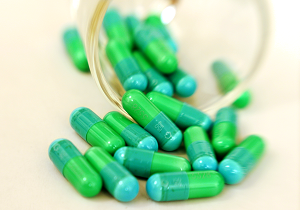 In November, 2015, medical researchers have found that E. coli bacteria have developed resistance to the antibiotics in China. The discovery caused unrest among the scientific community, as the mentioned bacterium demonstrated resistance to the “last resort” antibiotic — colistin. The findings also showed that such immunity is transferrable to other bacteria species. It means that infections, which could be easily treated with a course of antibiotics, are starting to become a threat to humans again.
In November, 2015, medical researchers have found that E. coli bacteria have developed resistance to the antibiotics in China. The discovery caused unrest among the scientific community, as the mentioned bacterium demonstrated resistance to the “last resort” antibiotic — colistin. The findings also showed that such immunity is transferrable to other bacteria species. It means that infections, which could be easily treated with a course of antibiotics, are starting to become a threat to humans again.
E. coli, the bacterium in the spotlight, is a common cause of kidney and urinary infections, and it is being modified to withstand the antibiotics treatment. Dr. Jim Spencer, a microbiologist with the University of Bristol, stated that bacteria are evolving and developing protection against a range of antibiotics. While colistin has been one potent drug that could work where no other drugs helped, it is being currently changed. Moreover, the immunity of E. coli also transfers its resistance to other bacteria. The latter are not necessarily of the same strain. Thus, researchers from the South China Agricultural University found that a number of microorganisms, including Pseudomonas aeruginosa and Klebsiella pneumoniae, were made immune to colistin as well. This way, anything from pneumonia to infectious diseases might soon become practically untreatable.
There are researchers who have been involved in the studies of antibiotic resistance and its development for a significant amount of time. For example, David Plunkett. The overuse of antibiotics in farm animals is his field of expertise. Dr. Plunkett stated that the problem of resistance in bacteria is a global one. It spreads from bacteria to bacteria and from plants and animals to humans who consume their products. Resistance is developed with prolonged consumption of the antibiotics over time. Farmers who give preventive drugs to their animals make a great contribution to the development of such resistance. As a result, microorganisms which cause various illnesses in the livestock (and, consequently, in humans) become immune to the known drugs. It is estimated that annually, 20,000 people die from antibiotic-resistant infections in the US alone.
There is no wonder that the broader awareness to the problem came with the studies in China. Currently, the country produces large amounts of colistin specifically for the agriculture and veterinary branches. It is also one of the biggest consumers of colistin. However, the drug is being exported to other parts of the world, and the demand for it grows each year. Thus, in 2021, the expected demand will rise from 12,000 to 16,500 tons.
Meanwhile, the WHO is encouraging people to retain from the massive use of antibiotics, in order to leave them as a last resort. The organization proposes that people use alternative infection-preventive measures, as well as turn all attention to the hygiene and sanitation norms. It also encourages governments to invest in medical research, development of diagnostic tools, and invention of new medicine. The US President has also signed a plan based on the FDA recommendations, which acknowledges the problem of antibiotics-resistance in bacteria and proposes that corresponding measures are being taken.
Antibiotics resistance in bacteria needs to be taken care of with great attention. With no antibiotics left to combat the bacteria, there could be a comeback of epidemics which would otherwise be forgotten, such as bubonic plague. Moreover, no surgical operations would be possible, as the potential infections would be hard—if not impossible—to combat. It remains now an open question, whether or not people will be able to overcome the problem and withhold from antibiotics overuse in the present for the sake of the future.
References:
- Antibiotic Resistance. U.S. Food and Drug Administration. GPO FCIC, 2009.
- Chin-Yi Chen, Xianghe Yan, CR Jackson. Antimicrobial Resistance and Food Safety: Methods and Techniques. Elsevier, 2015.
- Coates A. Antibiotic Resistance. Springer Science & Business Media, 2012.
- Global Action Plan on Antimicrobial Resistance. World Health Organization, Geneva, 2015.
- Global Colistin sulphate Industry Report 2015. QYResearch Colistin sulphate Research Center, Aug 2015.
- National Action Plan for Combating Antibiotic-Resistant Bacteria. The White House, Washington, 2015.
- Walsh F. The multiple roles of antibiotics and antibiotic resistance in nature. Frontiers Media SA, 2015.
- Yi-Yun Liu, Yang Wang, TR Walsh, et al. Emergence of plasmid-mediated colistin resistance mechanism MCR-1 in animals and human beings in China: a microbiological and molecular biological study. The Lancet: Infectious Diseases. Elsevier, 18 Nov 2015.
